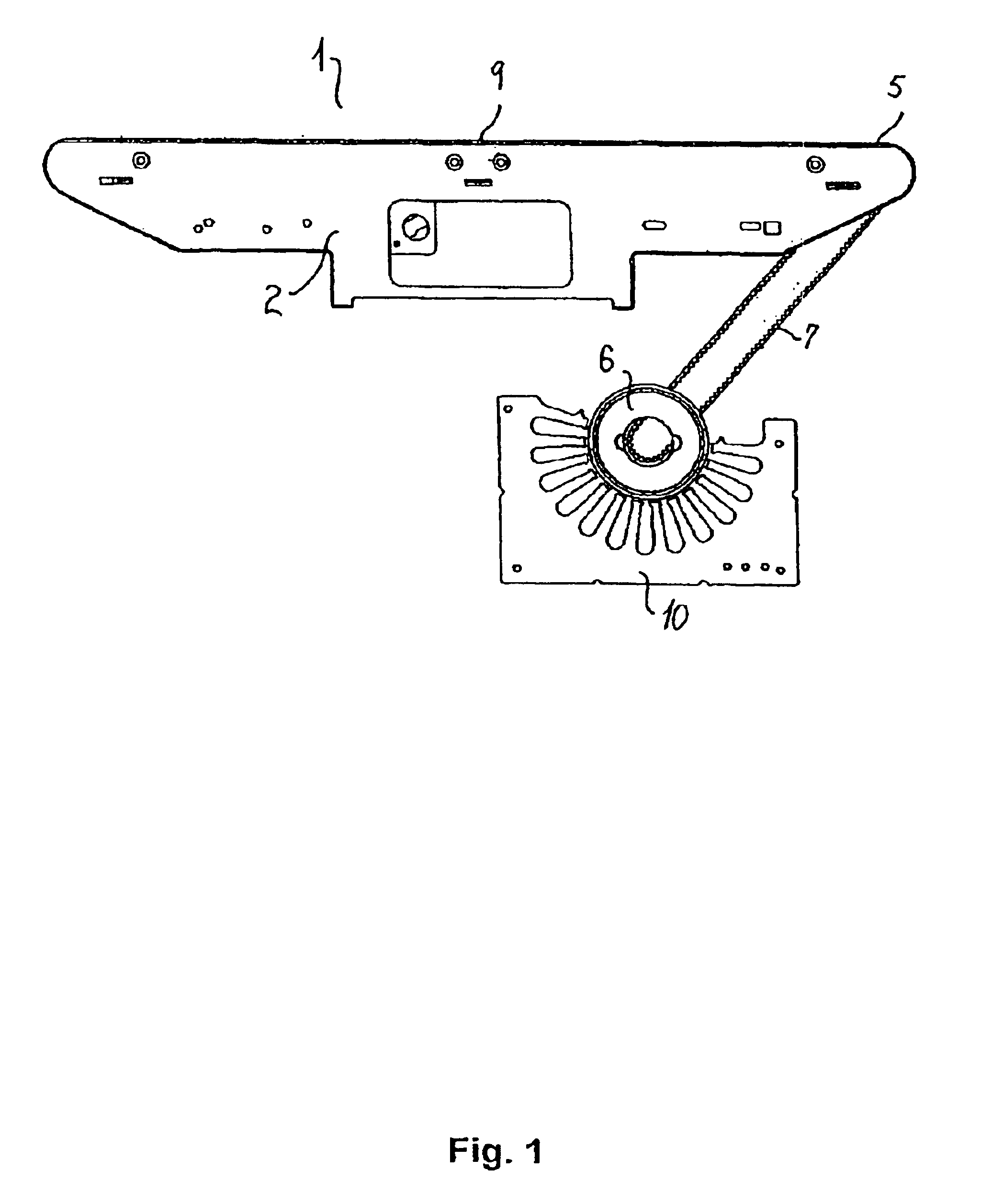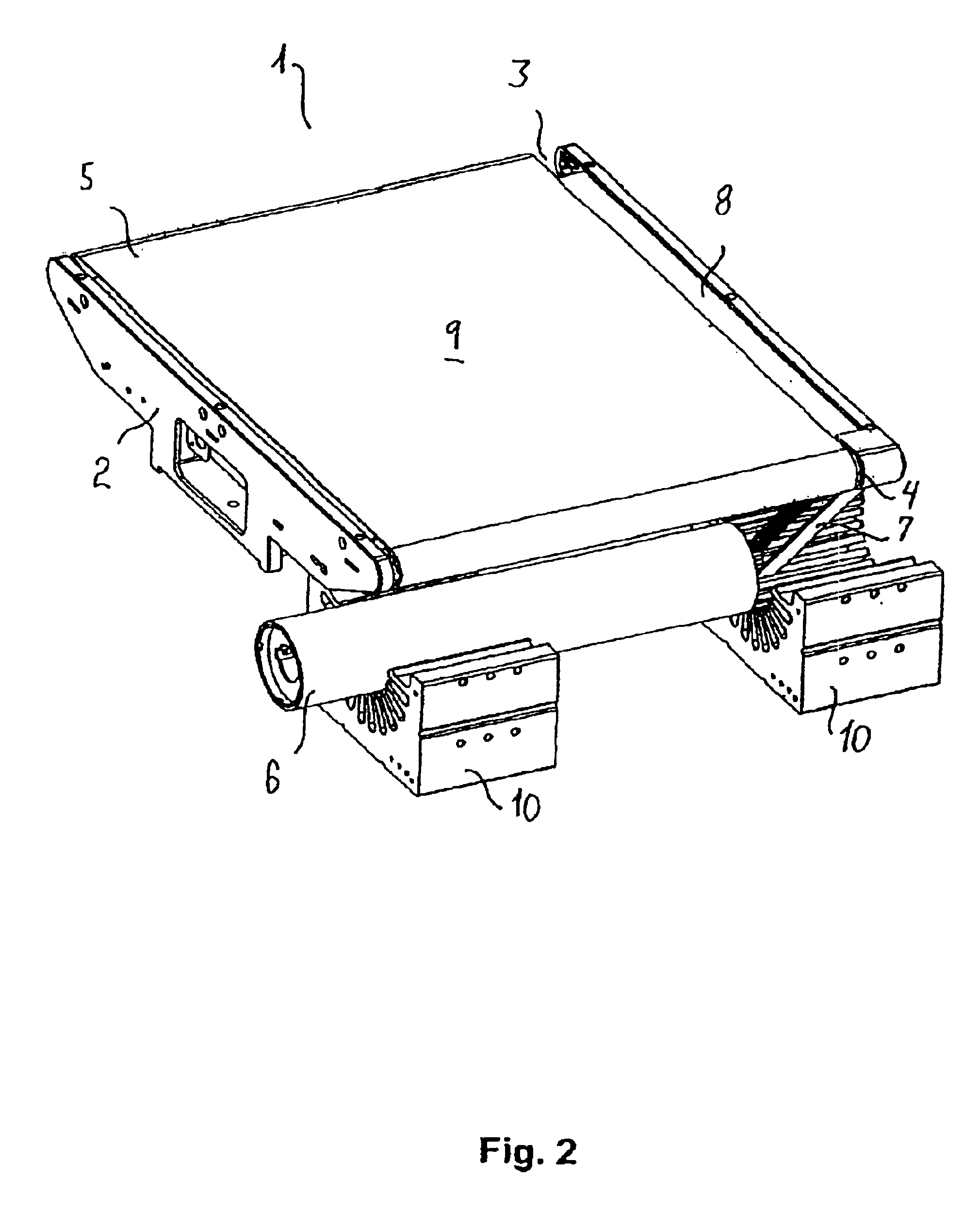Sorter conveyor
a sorter conveyor and conveyor technology, applied in the direction of conveyors, conveyor parts, packaging, etc., can solve the problem that the rotor is required to be susceptible to the travelling magnetic field, and achieve the effect of less expensiv
- Summary
- Abstract
- Description
- Claims
- Application Information
AI Technical Summary
Benefits of technology
Problems solved by technology
Method used
Image
Examples
Embodiment Construction
[0096]The cross-belt unit 1 shown in FIGS. 1-3 comprises a frame part 2 supporting two rollers 3, 4 around which the endless cross-belt 5 is running. One of the rollers 4 is the drive roller 4 connected to a rotor 6 by means of a toothed belt 7. The frame part 2 further carries a support plate 8 supporting the cross-belt 5 on the side opposite to the side forming the article-supporting surface 9 of the cross-belt unit 1. The rotor 6 is situated above two stationary electric stator parts 10.
[0097]The schematic view in FIG. 4 of the first embodiment of the cross-belt unit 1 may be compared to a second embodiment of a cross-belt unit 1′ shown in FIGS. 5-8. In the second embodiment, the transmission means comprises an intermediate roller 11 connected at a first end to the rotor 6 by means of a first belt and at a second end thereof to the drive roller 4 by means of a second belt 7′. This configuration provides a higher freedom of design and of changing and makes variations of a given de...
PUM
 Login to View More
Login to View More Abstract
Description
Claims
Application Information
 Login to View More
Login to View More - R&D
- Intellectual Property
- Life Sciences
- Materials
- Tech Scout
- Unparalleled Data Quality
- Higher Quality Content
- 60% Fewer Hallucinations
Browse by: Latest US Patents, China's latest patents, Technical Efficacy Thesaurus, Application Domain, Technology Topic, Popular Technical Reports.
© 2025 PatSnap. All rights reserved.Legal|Privacy policy|Modern Slavery Act Transparency Statement|Sitemap|About US| Contact US: help@patsnap.com



